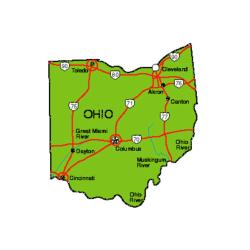Building Blocks State Case Study #8: Sending NBS Results in PDF Via Secure File Transfer Protocol (SFTP)

Ohio Newborn Screening Program
BACKGROUND
Ohio receives 140,000 newborn screening specimens each year. Once testing is completed, results are reported to the birth facility, facility collecting the specimen, primary care providers, and medical specialists providing care to the child. In 2016, more than 303,000 results were reported by the newborn screening program. The majority (approximately 90%) of these were faxed with the remainder being sent by US mail. Due to the high cost of faxing, the Ohio Department of Health (ODH) was exploring alternative methods of reporting.
PROBLEM
In September 2016 ODH reached out to a large pediatric hospital system to discuss alternatives to faxing newborn screening results. The hospital system had previously shown interest in receiving newborn screening results by HL7. A test message of newborn screening results (formatted following the National Library of Medicine) was sent to the hospital. After reviewing the message, the hospital determined the cost and time to implement HL7 messaging was unacceptable for the immediate need. The hospital was interested in exploring other options of transferring results electronically.
SOLUTION
In January 2017, alternatives to HL7 were discussed and the decision was made to initiate a pilot program to send newborn screening results in PDF Format via secure file transfer protocol (SFTP). The goals of this project included:
- Demonstrate that this task could be implemented quickly and at minimal cost.
- Setup an agency infrastructure to send files in PDF or HL7 format.
- Demonstrate to hospital staff that this process would be faster and more efficient for receiving results and require less staff time in managing reports.
The PerkinElmer LIMS system used by the Newborn Screening Program already generated a PDF of all newborn screening results and batched them by fax number. A routine was written to pull all PDF assigned to a fax number associated with the hospital into a designated folder at ODH. A naming convention for the PDFs was agreed upon that contained identifying information that could be used to assign reports to hospital medical record. A secure SFTP connection was set up between ODH and the pediatric hospital.
The first batch of reports was transferred the hospital via SFTP the first week of March 2017. In order to validate that all records were included in the PDF folder, the hospital has continued to receive every result by both PDF and fax to reconcile any differences. Transmission reports were also developed to specify the number and IDs of PDFs included in the file transfer. Recently, two auditing routines were created to 1) assure that each report is sent and 2) assure that each report is received. This should eliminate the need for manual auditing.
This pilot project showed that the infrastructure for sending electronic results could be set up quickly and at little cost. This process could easily be expanded to send electronic results to multiple hospitals. Currently the data is being sent in PDF format, but the same infrastructure could be used to send HL7 messages. Because of the need for a bidirectional SFTP line, it is unlikely that this would be the method of electronic result transmission for primary care physicians in the community.